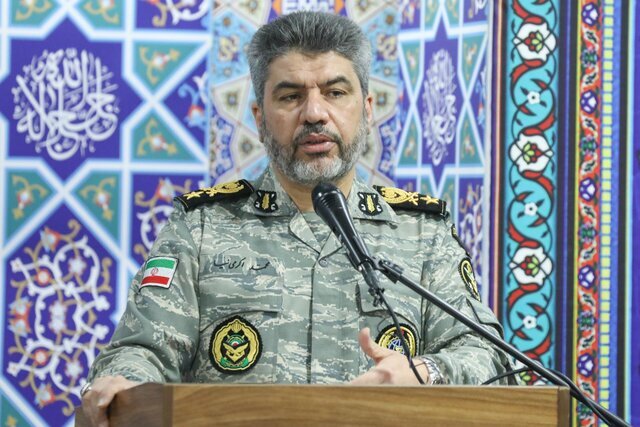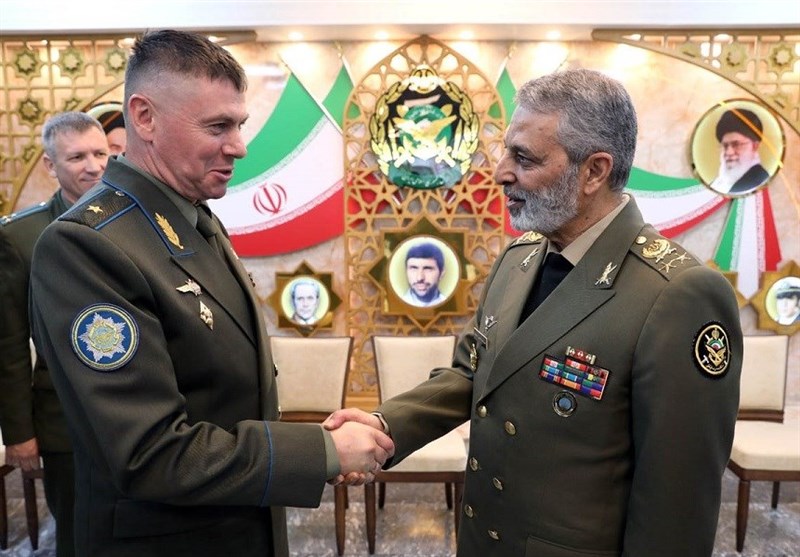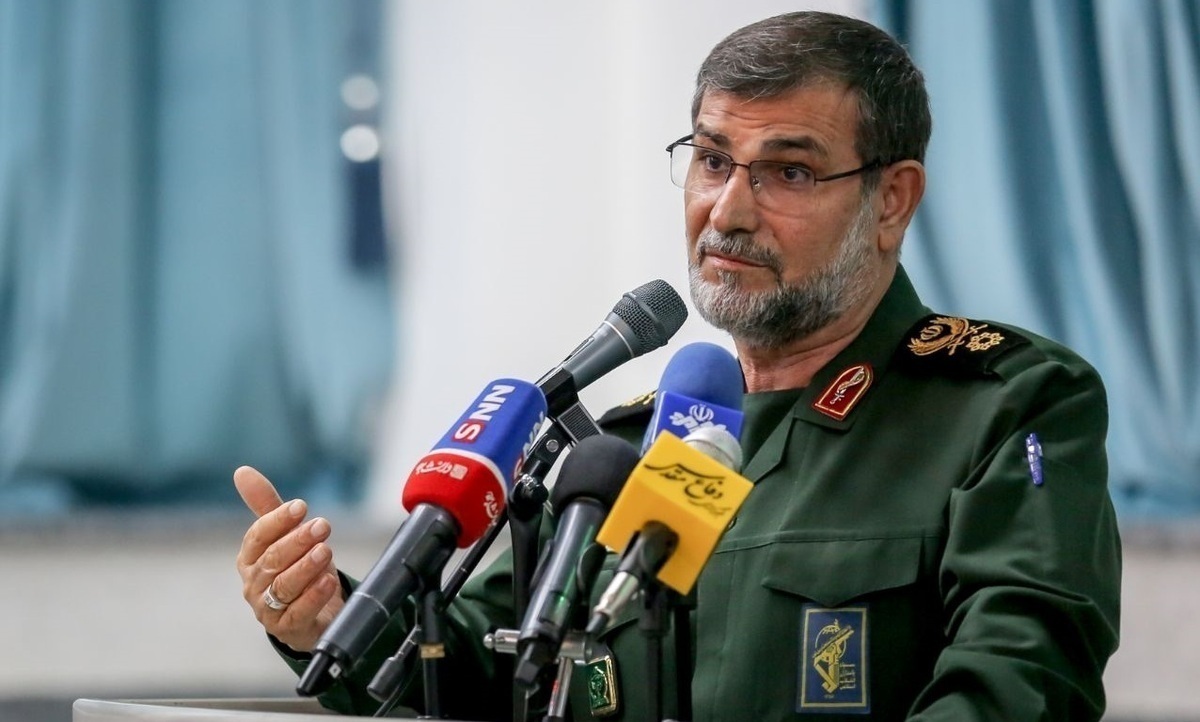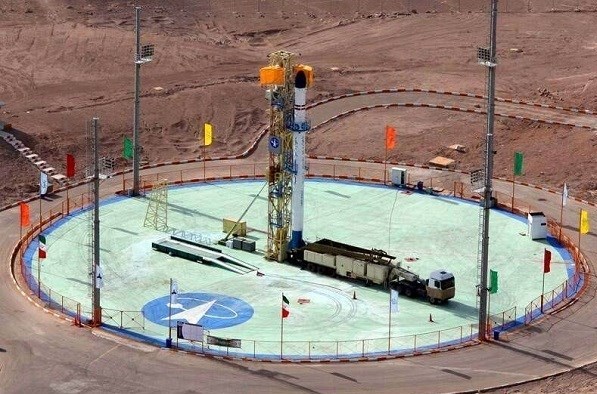
Deputy Coordinator of the Army Ideological-Political Organization, Brigadier General Mohammad Akraminia, speaking out against Israel on 10 September 2024.
“The Zionists alone lack the capability to open a new front in the region, and the continuation of the Gaza war is not feasible for them and will not achieve anything for them.”
As tit-for-tat strikes continue between Israel and Lebanon since 7 October 2023, Iran believes the Jewish state is too weak to take on a new war front with Hezbollah. As reported by Iranian state broadcaster IRIB, Deputy Coordinator of the Army Ideological-Political Organization, Brigadier General Mohammad Akraminia, said on 10 September that Israel lacks “the capability to open a new front in the region, and the continuation of the Gaza war is not feasible for them and will not achieve anything for them.” The comments come after Lebanese Hezbollah retaliated on 25 August for Israel’s assassination of its military commander, Fuad Shukr, at the end of July.[i]
In the excerpted article, Brigadier General Akraminia explained that Israel continues to threaten the Lebanese militant group, which he believes has “precise” missile and drone capabilities, due to Israel’s failure to destroy Hamas and release the remaining hostages, as well as its inability to stop the Hezbollah’s attacks. He emphasized that “internal issues and high casualties in the Gaza war have left the occupiers with no choice but to retreat and accept a ceasefire,” referring to Israel.
Due to its failures, the Brigadier General believes Israel is trying “to draw actors such as the United States and Europe into the battlefield, hoping to save itself from the Gaza quagmire.” In other words, Israel is trying to start a war with its northern neighbor to distract from its failings in Gaza. However, Akraminia noted that the upcoming U.S. presidential election makes it unlikely a full-scale war would be supported. Akraminia’s comments suggest that Tehran and the Resistance Axis—led by its crown jewel proxy, Hezbollah—believe they have been in a position of strength since 7 October 2023, suggesting that these proxy groups will continue responding to Israel as long as the Gaza war continues.
Sources:
“صهیونیستها قادر به نبرد همهجانبه با حزبالله نیستند (The Zionists are not capable of an all-out battle with Hezbollah),” Islamic Republic of Iran Broadcasting (state broadcaster), 10 September 2024. https://www.iribnews.ir/00I9ou.
According to IRIB News Agency, Brigadier General [Mohammad] Akraminia, in an interview regarding the Zionist authorities’ threat of a full-scale attack on Lebanon, stated: “Given the failure of the Zionist regime in achieving its declared goals, including the release of prisoners, the destruction of Hamas, and the inability to stop Hezbollah’s attacks, the authorities of this regime are constantly threatening the Lebanese resistance forces.”
The Deputy Coordinator of the Army Ideological-Political Organization added: “The Zionist regime is trying to expand the war in the region in order to draw actors such as the U.S. and Europeans into the battlefield, hoping to save itself from the Gaza quagmire.”
Noting that the Zionist regime is battling the Resistance Axis on several fronts, Brigadier General Akraminia said: “The Zionists alone lack the capability to open a new front in the region, and the continuation of the Gaza war is not feasible for them and will not achieve anything for them.”
The Deputy Coordinator of the Army Ideological-Political Organization stated that the Gaza battle is being fought directly with U.S. and Western countries’ military aid and remarked: “Considering the upcoming U.S. presidential elections, it is unlikely that they would support a full-scale attack on Lebanon and the opening of a new front in the region.”
Brigadier General Akraminia stressed the precision of Hezbollah’s missiles and drones and their success in various operations against the Zionists, stating: “The Zionists are well aware of Lebanese Hezbollah’s capabilities, and we only witnessed a small part of these capabilities during the Arbaeen operations,” referring to Fuad Shukr retaliation.
The Deputy Coordinator of the Army Ideological-Political Organization, referring to the Zionist officials’ acknowledgment of Hezbollah’s high capabilities, noted: “Internal issues and high casualties in the Gaza war have left the occupiers with no choice but to retreat and accept a ceasefire.”
Notes:
[i] Ronen Bergman, Adam Rasgon, Euan Ward, Farnaz Fassihi, and Hwaida Saad, “Israel Says It Killed Hezbollah Commander in Airstrike Near Beirut,” New York Times, 30 July 2024.https://www.nytimes.com/2024/07/30/world/middleeast/israel-hezbollah-lebanon.html
Image Information:
Image: Deputy Coordinator of the Army Ideological-Political Organization, Brigadier General Mohammad Akraminia, speaking out against Israel on 10 September 2024.
Source: IRIB (Iranian media outlet) https://www.iribnews.ir/00I9ou








